MaryAnn Bernal's Blog, page 286
May 2, 2014
'MEIN TANZ MIT ROMMEL' by Elisabeth Marrion

Biografie Elisabeth Marrion ist gebuertige Hildesheimerin. 1969 wollte sie ein Jahr in England verbringen um ihre Sprachkenntnisse zu erweitern.Dann noch ein Jahr und dann noch ein Jahr. Bevor sie sich besann sind die Jahre verflogen. Sie hat geheirated, ihre Familie grossgezogen, das Ehepaar hat eine Grosshandelsfirma aufgebaut, haben im Fernen Osten und Mittel Osten gearbeited und haben ihren Fabrikanten in Bangladesh geholfen eine Schule auf dem Land fuer weiterbildene Schueler und Schuelerinnen zu bauen. Heute gehen dort Jungen und Maedchen im Alter von 12-18 Jahren zur Schule.In der Zwischenzeit ist Elisabeth im Ruhestand und ist noch immer in England.
Amazon Germany
http://www.amazon.de/Mein-Tanz-mit-Rommel-Roman/dp/3838205685/ref=sr_1_1?ie=UTF8&qid=1399029071&sr=8-1&keywords=mein+tanz+mit+rommel

Published on May 02, 2014 06:24
History Trivia - Anne Boleyn, Queen of England, arrested and imprisoned on charges of adultery, incest, treason and witchcraft
May 2
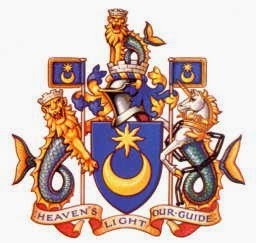
1194 King Richard I of England gave Portsmouth its first Royal Charter.
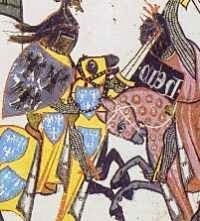
1230 William de Braose (Marcher lord detested by the Welsh) was hanged by Prince Llywelyn the Great.

1519 Leonardo da Vinci died. 1
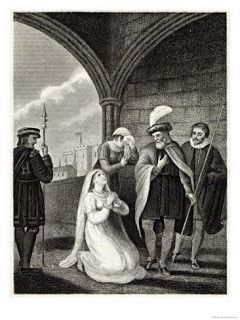
536 Anne Boleyn, Queen of England, was arrested and imprisoned on charges of adultery, incest, treason and witchcraft.

1559 John Knox returned from exile to Scotland to become the leader of the beginning Scottish Reformation.
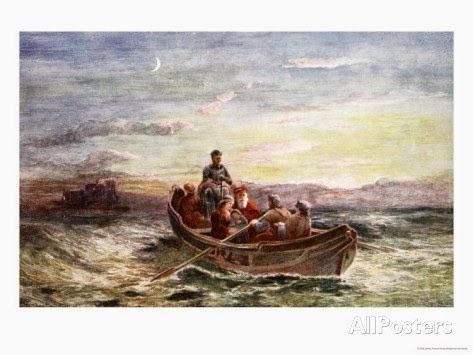
1568 Mary, Queen of Scots, escaped from Loch Leven Castle.


1194 King Richard I of England gave Portsmouth its first Royal Charter.

1230 William de Braose (Marcher lord detested by the Welsh) was hanged by Prince Llywelyn the Great.

1519 Leonardo da Vinci died. 1

536 Anne Boleyn, Queen of England, was arrested and imprisoned on charges of adultery, incest, treason and witchcraft.

1559 John Knox returned from exile to Scotland to become the leader of the beginning Scottish Reformation.

1568 Mary, Queen of Scots, escaped from Loch Leven Castle.

Published on May 02, 2014 05:27
May 1, 2014
The Phil Naessens Show: Oakland Athletics, NFL Draft and New York Mets Sports Talk

On today’s Phil Naessens Show Alex Hall joins Phil to talk Oakland Athletics baseball, Joe Mullinax joins Phil to preview Wide Receiver NFL Draft hopefuls and Mark Berman joins Phil to talk New York Mets baseball
http://phillipnaessens.wordpress.com/2014/05/01/the-phil-naessens-show-oakland-athletics-nfl-draft-and-new-york-mets-sports-talk/

Published on May 01, 2014 10:51
Mr. Chuckles stopped by the Wizard's Cauldron, hoping to track down a rogue agent

R.Kyle Hannah, ex-Army turned science fiction writer, was the second interviewee to visit the Cauldron in 2012.
Promoting his well received novel "Time Assassins", he and his many friends and fans helped establish the Cauldron in those early days when few people had heard of us. It was only in the last three months that Kyle's interview dropped out of the top ten, such was its popularity amongst readers of the Cauldron.
I was delighted to be able to interview Kyle once more. A gentleman and an optimist, I picked up the Wizphone and caught up with Kyle as he was battling his way through Level 19 of The Division somewhere south of the Mason Dixon line.
Want more of R. Kyle Hannah? Click on the link
http://greenwizard62.blogspot.com/2014/04/rkyle-hannah-sci-fi-writer-of-assassins.html

Published on May 01, 2014 09:40
Dozens of Mummies Unearthed at Egypt's Valley of the Kings
By Megan Gannon, News Editor
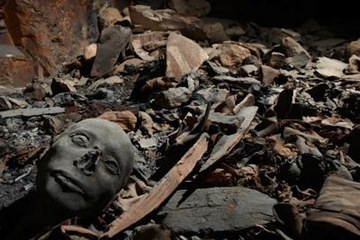 Tomb KV 40 at the Valley of the Kings was plundered several times and damaged by a fire. During recent excavations, archaeologists discovered mummified remains alongside fragments of coffins, cloth and pottery. Family members and children related to the pharaohs were likely buried here in the 14th century B.C.
Tomb KV 40 at the Valley of the Kings was plundered several times and damaged by a fire. During recent excavations, archaeologists discovered mummified remains alongside fragments of coffins, cloth and pottery. Family members and children related to the pharaohs were likely buried here in the 14th century B.C.
Credit: Matjaz Kacicnik, University of Basel/Egyptology
Archaeologists have discovered the final resting place of at least 50 royal Egyptians — including princes, princesses and infants — while excavating a trashed tomb at the Valley of the Kings.
Hieratic inscriptions (a cursive form of hieroglyphs) revealed that most of the mummies in the tomb were related to two pharaohs, Thutmose IV and Amenhotep III, who ruled during the 14th century B.C. The dead included at least eight previously unknown royal daughters, four princes and some children, the archaeologists said.
During Egypt's New Kingdom (1550-1070 B.C.), royals were buried at the Valley of the Kings, a site along the Nile, opposite modern-day Luxor, about 312 miles (500 kilometers) south of Cairo. King Tutankhamun's tomb is among the best preserved burials to have been discovered at the Valley of the Kings, and new tombs are still being discovered and studied at the site today.
One of those newly studied tombs is KV 40. From the surface, the only hint of a burial chamber was a depression in the ground. Excavations revealed a 16-foot-deep (5 meters) shaft, a corridor and four rooms in shambles. The 3,300-year-old tomb was likely plundered for its gold and wood during antiquity, and later looted for any other valuable goods that could be sold. The archaeologists, who have been excavating in the region since 2009, found textiles, mummy bandages, linen cloths, bones and other scattered funerary artifacts in the tomb. These objects were covered with soot from a heavy fire, presumably set by grave robbers of the late 19th century.
The adult mummies in KV 40 are largely fragmentary, likely torn apart by grave robbers, but infant corpses in the underground burial chamber remain intact, said researcher Susanne Bickel, of the University of Basel in Switzerland. And while most infants who died would have been buried in a simple fashion at the time, royal children buried in KV 40 seem to have been given a proper mummification, Bickel added.
"They are wrapped in numerous layers of bandages and treated with bitumen," a sticky embalming substance, Bickel told Live Science in an email.
For now, the archaeologists have not determined a cause of death for these infants; anthropological investigations are planned for the next dig season, Bickel said.
"What is certain is that they did not die at the same time (no epidemic), but over a certain time span," Bickel said.
 Bits of coffins made from wood and a plastered material known as cartonnage indicate that tomb KV 40 was used again as a burial ground in the ninth century B.C., for members of priestly families during Egypt's Third Intermediate Period.
Bits of coffins made from wood and a plastered material known as cartonnage indicate that tomb KV 40 was used again as a burial ground in the ninth century B.C., for members of priestly families during Egypt's Third Intermediate Period.
Studying the newfound mummies and their scattered grave goods could shed light on the lives of people in the pharaohs' royal court, Bickel and her colleagues said.
http://www.livescience.com/45186-mummies-unearthed-egypts-valley-of-the-kings.html
 Tomb KV 40 at the Valley of the Kings was plundered several times and damaged by a fire. During recent excavations, archaeologists discovered mummified remains alongside fragments of coffins, cloth and pottery. Family members and children related to the pharaohs were likely buried here in the 14th century B.C.
Tomb KV 40 at the Valley of the Kings was plundered several times and damaged by a fire. During recent excavations, archaeologists discovered mummified remains alongside fragments of coffins, cloth and pottery. Family members and children related to the pharaohs were likely buried here in the 14th century B.C.Credit: Matjaz Kacicnik, University of Basel/Egyptology
Archaeologists have discovered the final resting place of at least 50 royal Egyptians — including princes, princesses and infants — while excavating a trashed tomb at the Valley of the Kings.
Hieratic inscriptions (a cursive form of hieroglyphs) revealed that most of the mummies in the tomb were related to two pharaohs, Thutmose IV and Amenhotep III, who ruled during the 14th century B.C. The dead included at least eight previously unknown royal daughters, four princes and some children, the archaeologists said.
During Egypt's New Kingdom (1550-1070 B.C.), royals were buried at the Valley of the Kings, a site along the Nile, opposite modern-day Luxor, about 312 miles (500 kilometers) south of Cairo. King Tutankhamun's tomb is among the best preserved burials to have been discovered at the Valley of the Kings, and new tombs are still being discovered and studied at the site today.
One of those newly studied tombs is KV 40. From the surface, the only hint of a burial chamber was a depression in the ground. Excavations revealed a 16-foot-deep (5 meters) shaft, a corridor and four rooms in shambles. The 3,300-year-old tomb was likely plundered for its gold and wood during antiquity, and later looted for any other valuable goods that could be sold. The archaeologists, who have been excavating in the region since 2009, found textiles, mummy bandages, linen cloths, bones and other scattered funerary artifacts in the tomb. These objects were covered with soot from a heavy fire, presumably set by grave robbers of the late 19th century.
The adult mummies in KV 40 are largely fragmentary, likely torn apart by grave robbers, but infant corpses in the underground burial chamber remain intact, said researcher Susanne Bickel, of the University of Basel in Switzerland. And while most infants who died would have been buried in a simple fashion at the time, royal children buried in KV 40 seem to have been given a proper mummification, Bickel added.
"They are wrapped in numerous layers of bandages and treated with bitumen," a sticky embalming substance, Bickel told Live Science in an email.
For now, the archaeologists have not determined a cause of death for these infants; anthropological investigations are planned for the next dig season, Bickel said.
"What is certain is that they did not die at the same time (no epidemic), but over a certain time span," Bickel said.
 Bits of coffins made from wood and a plastered material known as cartonnage indicate that tomb KV 40 was used again as a burial ground in the ninth century B.C., for members of priestly families during Egypt's Third Intermediate Period.
Bits of coffins made from wood and a plastered material known as cartonnage indicate that tomb KV 40 was used again as a burial ground in the ninth century B.C., for members of priestly families during Egypt's Third Intermediate Period.Studying the newfound mummies and their scattered grave goods could shed light on the lives of people in the pharaohs' royal court, Bickel and her colleagues said.
http://www.livescience.com/45186-mummies-unearthed-egypts-valley-of-the-kings.html
Published on May 01, 2014 09:31
Early Image of Jesus Found in Egyptian Tomb
http://news.discovery.com/history/archaeology/early-image-of-jesus-found-in-egyptian-tomb-140430.htm
by Rossella Lorenzi
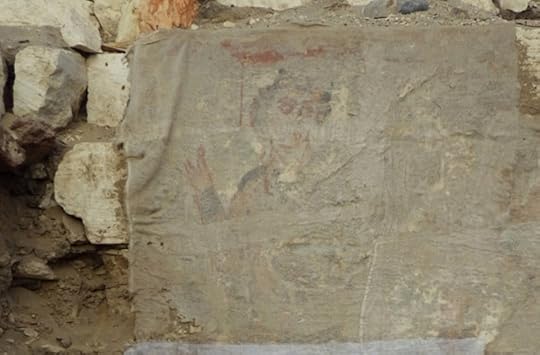 Spanish archaeologists have discovered what may be one of the earliest depictions of Jesus in an ancient Egyptian tomb.
Spanish archaeologists have discovered what may be one of the earliest depictions of Jesus in an ancient Egyptian tomb.
Painted on the walls of a mysterious underground stone structure in the ancient Egyptian city of Oxyrhynchus, about 100 miles south of Cairo, the image shows a young man with curly hair and dressed in a short tunic.
“He raises his hand as if making a blessing,” said Egyptologist Josep Padró, who has spent over 20 years excavating sites in the area.
What Did Jesus Look Like?
In this expedition, he led a team of archaeologists from the University of Barcelona, the Catalan Egyptology Society and the University of Montpellier.
“We could be dealing with a very early image of Jesus Christ,” Padró added.
Oxyrhynchus is known for the worship of the Egyptian god of the afterlife Osiris: indeed the underground structure was located in the middle of a processional route that joins the Nile with the Osireion, the temple dedicated to Osiris.
But the painting is from much later, dating from between the sixth and seventh century A.D.
To get to the underground chamber, Padró’s team removed over 45 tons of stones.
Finally, the archaeologists reached a rectangular crypt measuring about 26 feet long and 12 feet deep. They are unsure what the function of the structure was originally, but believe it might have possibly been another temple dedicated to Osiris.
Fact-Checking the Bible
Once inside, the archaeologists found five or six coats of paint on the walls, the last of which was from the Coptic period of the first Christians.
In addition to the image of the curly man, the walls feature symbols and images of plants and inscriptions written in the Coptic language, which are currently being translated.
“In order to carry out future campaigns, it is necessary to excavate an attached structure. A flight of well worn stairs give access to it, but researchers do not know its content yet,” the University of Barcelona said in a statement.
Photo: The image, protected from the sun with a thin layer of material, shows a young man with curly hair and dressed in a short tunic, with a hand raised as if making a blessing. Credit: University of Barcelona

by Rossella Lorenzi
 Spanish archaeologists have discovered what may be one of the earliest depictions of Jesus in an ancient Egyptian tomb.
Spanish archaeologists have discovered what may be one of the earliest depictions of Jesus in an ancient Egyptian tomb.Painted on the walls of a mysterious underground stone structure in the ancient Egyptian city of Oxyrhynchus, about 100 miles south of Cairo, the image shows a young man with curly hair and dressed in a short tunic.
“He raises his hand as if making a blessing,” said Egyptologist Josep Padró, who has spent over 20 years excavating sites in the area.
What Did Jesus Look Like?
In this expedition, he led a team of archaeologists from the University of Barcelona, the Catalan Egyptology Society and the University of Montpellier.
“We could be dealing with a very early image of Jesus Christ,” Padró added.
Oxyrhynchus is known for the worship of the Egyptian god of the afterlife Osiris: indeed the underground structure was located in the middle of a processional route that joins the Nile with the Osireion, the temple dedicated to Osiris.
But the painting is from much later, dating from between the sixth and seventh century A.D.
To get to the underground chamber, Padró’s team removed over 45 tons of stones.
Finally, the archaeologists reached a rectangular crypt measuring about 26 feet long and 12 feet deep. They are unsure what the function of the structure was originally, but believe it might have possibly been another temple dedicated to Osiris.
Fact-Checking the Bible
Once inside, the archaeologists found five or six coats of paint on the walls, the last of which was from the Coptic period of the first Christians.
In addition to the image of the curly man, the walls feature symbols and images of plants and inscriptions written in the Coptic language, which are currently being translated.
“In order to carry out future campaigns, it is necessary to excavate an attached structure. A flight of well worn stairs give access to it, but researchers do not know its content yet,” the University of Barcelona said in a statement.
Photo: The image, protected from the sun with a thin layer of material, shows a young man with curly hair and dressed in a short tunic, with a hand raised as if making a blessing. Credit: University of Barcelona

Published on May 01, 2014 09:25
Neanderthals were not less intelligent than modern humans, scientists find
Researchers say there is no evidence that modern humans' cognitive superiority led to demise of Neanderthals
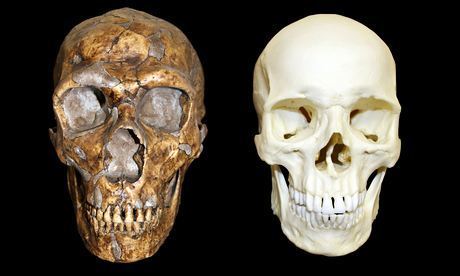
Ian Sample, science correspondent
Neanderthal and modern human skulls. Photograph: Sabena Jane Blackbird/AlamyScientists have concluded that Neanderthals were not the primitive dimwits they are commonly portrayed to have been.
The view of Neanderthals as club-wielding brutes is one of the most enduring stereotypes in science, but researchers who trawled the archaeological evidence say the image has no basis whatsoever.
They said scientists had fuelled the impression of Neanderthals being less than gifted in scores of theories that purport to explain why they died out while supposedly superior modern humans survived.
Wil Roebroeks at Leiden University in the Netherlands said: "The connotation is generally negative. For instance, after incidents with the Dutch Ajax football hooligans about a week ago, one Dutch newspaper piece pleaded to make football stadiums off-limits for such 'Neanderthals'."
The Neanderthals are believed to have lived between roughly 350,000 and 40,000 years ago, their populations spreading from Portugal in the west to the Altai mountains in central Asia in the east. They vanished from the fossil record when modern humans arrived in Europe.
The reasons for the demise of the Neanderthals have long been debated in the scientific community, but many explanations assume that modern humans had a cognitive edge that manifested itself in more cooperative hunting, better weaponry and innovation, a broader diet, or other major advantages.
Roebroeks and his colleague, Dr Paola Villa at the University of Colorado Museum in Boulder, trawled through the archaeological records to look for evidence of modern human superiority that underpinned nearly a dozen theories about the Neanderthals' demise and found that none of them stood up.
"The explanations make good stories, but the only problem is that there is no archaeology to back them up," said Roebroeks.
Villa said part of the misunderstanding had arisen because researchers compared Neanderthals with their successors, the modern humans who lived in the Upper Palaeolithic, rather than the humans who lived at the same time. That is like saying people in the 19th century were less intelligent than those in the 21st because they didn't have laptops and space travel.
"The evidence for cognitive inferiority is simply not there," said Villa. "What we are saying is that the conventional view of Neanderthals is not true." The study is published in the journal Plos One.
So what did kill off our equally intelligent extinct cousins? Roebroecks said that the reasons must have been complex, and that recent genetic studies that have decoded the Neanderthal genome might reveal some clues. Those studies show that Neanderthals lived in small, fragmented groups, and interbred to some extent with modern humans. Some of their inbred male offspring were infertile. The arrival of modern humans may simply have swamped and assimilated them.
"Stereotypes help people to order their world, but the stereotype of the primitive Neanderthal is now gradually eroding, at least in scientific circles," said Roebroecks.
http://www.theguardian.com/science/2014/apr/30/neanderthals-not-less-intelligent-humans-scientists

Ian Sample, science correspondent
Neanderthal and modern human skulls. Photograph: Sabena Jane Blackbird/AlamyScientists have concluded that Neanderthals were not the primitive dimwits they are commonly portrayed to have been.
The view of Neanderthals as club-wielding brutes is one of the most enduring stereotypes in science, but researchers who trawled the archaeological evidence say the image has no basis whatsoever.
They said scientists had fuelled the impression of Neanderthals being less than gifted in scores of theories that purport to explain why they died out while supposedly superior modern humans survived.
Wil Roebroeks at Leiden University in the Netherlands said: "The connotation is generally negative. For instance, after incidents with the Dutch Ajax football hooligans about a week ago, one Dutch newspaper piece pleaded to make football stadiums off-limits for such 'Neanderthals'."
The Neanderthals are believed to have lived between roughly 350,000 and 40,000 years ago, their populations spreading from Portugal in the west to the Altai mountains in central Asia in the east. They vanished from the fossil record when modern humans arrived in Europe.
The reasons for the demise of the Neanderthals have long been debated in the scientific community, but many explanations assume that modern humans had a cognitive edge that manifested itself in more cooperative hunting, better weaponry and innovation, a broader diet, or other major advantages.
Roebroeks and his colleague, Dr Paola Villa at the University of Colorado Museum in Boulder, trawled through the archaeological records to look for evidence of modern human superiority that underpinned nearly a dozen theories about the Neanderthals' demise and found that none of them stood up.
"The explanations make good stories, but the only problem is that there is no archaeology to back them up," said Roebroeks.
Villa said part of the misunderstanding had arisen because researchers compared Neanderthals with their successors, the modern humans who lived in the Upper Palaeolithic, rather than the humans who lived at the same time. That is like saying people in the 19th century were less intelligent than those in the 21st because they didn't have laptops and space travel.
"The evidence for cognitive inferiority is simply not there," said Villa. "What we are saying is that the conventional view of Neanderthals is not true." The study is published in the journal Plos One.
So what did kill off our equally intelligent extinct cousins? Roebroecks said that the reasons must have been complex, and that recent genetic studies that have decoded the Neanderthal genome might reveal some clues. Those studies show that Neanderthals lived in small, fragmented groups, and interbred to some extent with modern humans. Some of their inbred male offspring were infertile. The arrival of modern humans may simply have swamped and assimilated them.
"Stereotypes help people to order their world, but the stereotype of the primitive Neanderthal is now gradually eroding, at least in scientific circles," said Roebroecks.
http://www.theguardian.com/science/2014/apr/30/neanderthals-not-less-intelligent-humans-scientists

Published on May 01, 2014 09:20
Indie Scribe Magazine - Mary Ann Bernal - featured author

 Click on the link to read the article in its entirety http://www.joomag.com/magazine/indie-scribe-magazine-may-2014/0621510001396992082
Click on the link to read the article in its entirety http://www.joomag.com/magazine/indie-scribe-magazine-may-2014/0621510001396992082

Published on May 01, 2014 09:03
'Mummy Lake' Used for Ancient Rituals, Not Water Storage
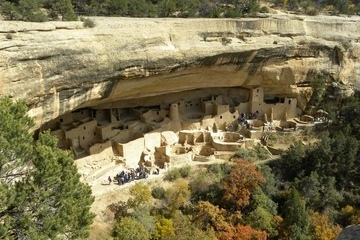
 Far View refers to the group of archaeological structures located on the northern part of the park's Chapin Mesa ridge, where Mummy Lake is also situated. Shown here, one of the last structures built on Chapin Mesa.
Far View refers to the group of archaeological structures located on the northern part of the park's Chapin Mesa ridge, where Mummy Lake is also situated. Shown here, one of the last structures built on Chapin Mesa.Credit: Larry Benson View full size image In Colorado's Mesa Verde National Park, a large 1,000-year-old structure long thought to be an Ancestral Puebloan water reservoir may not have been built to store water after all, a new study suggests.
Instead, the so-called Mummy Lake — which isn't a lake and has never been associated with mummies — likely held ancient ritual ceremonies, researchers say.
Mummy Lake is a sandstone-lined circular pit that was originally 90 feet (27.5 meters) across and 22 feet (6.65 m) deep. In 1917, American naturalist Jesse Walter Fewkes pegged the structure as a prehistoric water reservoir. Several subsequent studies of Mummy Lake have also supported this view, leading the National Parks Service to officially name the structure "Far View Reservoir" in 2006. (Far View refers to the group of archaeological structures located on the northern part of the park's Chapin Mesa ridge, where Mummy Lake is also situated.)
In the new study, researchers analyzed the hydrologic, topographic, climatic and sedimentary features of Mummy Lake and the surrounding cliff area. They concluded that, contrary to what previous research had determined, the pit wouldn't have effectively collected or distributed water. [See Images of Mummy Lake in Mesa Verde]
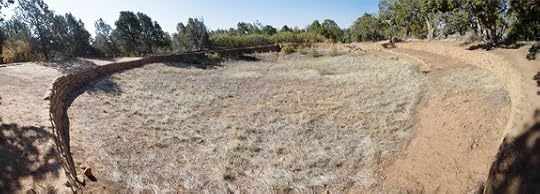 [image error]
[image error]
 A panorama of Mummy Lake in Colorado's Mesa Verde National Park.
A panorama of Mummy Lake in Colorado's Mesa Verde National Park.Credit: Carl Bowser, Silver Pixel ImagesView full size image"The fundamental problem with Mummy Lake is that it's on a ridge," said study lead author Larry Benson, an emeritus research scientist for the U.S. Geological Survey and adjunct curator of anthropology at the University of Colorado Museum of Natural History. "It's hard to believe that Native Americans who understood the landscape and were in need of water would have decided to build a reservoir on that ridge."
A supposed reservoir
Far View Village lies on a ridgeline that decreases in elevation from north to south, and includes Far View House, Pipe Shrine House, Far View Tower, Mummy Lake and other buildings. Previously, scientists had thought Mummy Lake — the northernmost structure — was a key part of a large water collection and distribution system that transported water between these structures to areas south of the reservoir.
They proposed that a gathering basin was once located uphill from Mummy Lake, and that a hypothetical "feeder ditch" connected the two locations. Studies have shown that another shallow, foot-paved ditch runs south from Mummy Lake to Far View House and Pipe Shrine House, and a third ditch connects Far View Village to Spruce Tree House and Cliff Palace (two structures built centuries after the Far View group) farther south. [Image Gallery: Lake Natron Gives Up Its Dead]
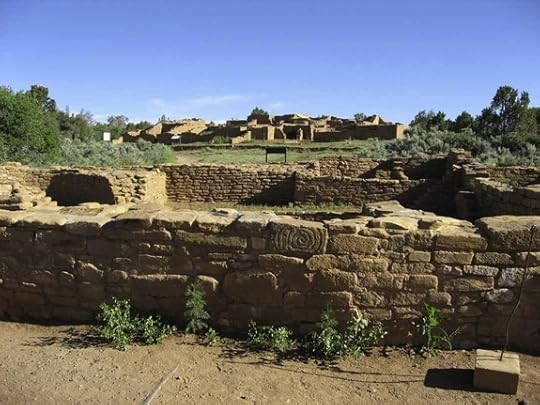 [image error]
[image error]
 Far View Village lies on a ridgeline that decreases in elevation from north to south, and includes Far View House (shown in background), Pipe Shrine House (shown in foreground), Far View Tower, Mummy Lake and other buildings.
Far View Village lies on a ridgeline that decreases in elevation from north to south, and includes Far View House (shown in background), Pipe Shrine House (shown in foreground), Far View Tower, Mummy Lake and other buildings.Credit: Benson et al./ElsevierView full size imageThe prevailing idea was that precipitation would first collect in the basin, and then travel down to Mummy Lake along the ditch; from there, some of it could then travel to the rest of the village, providing water for drinking and irrigating crops.
"I think it's appealing to think of Mummy Lake as a reservoir," Benson told Live Science, noting that the Ancestral Puebloans of Mesa Verde lived in a region without any natural bodies of water. "[Scientists] naturally want to find structures that hold or convey water, to explain how the people got their water."
Testing the theory
To test this reservoir theory, Benson and his colleagues first analyzed the topography and hydrology of the ridge using GPS surveys, high-resolution imagery and digital elevation models.
They found that the ditches leading from Mummy Lake to the southern structures couldn't have functioned as water canals or irrigation distribution systems. The ditches would have easily spilled water over the canyon edge at various points if it didn't have walls controlling the water flow (which don't appear to have existed).
Next, the team used climate models to investigate Mummy Lake's potential to store water. They found that even in the wettest year on record, 1941, the pit would have gotten less than a foot of water from winter and spring precipitation by the end of April. This water would have completely evaporated by the end of July, when it's most needed for crops.
The researchers then tested if a hypothetical feeder ditch could actually provide Mummy Lake with water. "The engineering and sediment transport work showed that any water in the ditch would start moving so much dirt that it would block the path," Benson said. That is, soil would have quickly clogged the ditch after regular rainfall, preventing the water from reaching Mummy Lake.
A ceremonial structure?
Benson and his colleagues propose Mummy Lake is an unroofed ceremonial structure, not unlike the ancient kivas and plazas elsewhere in the Southwest. They noted that the structure is similar in size to a great kiva found at a Pueblohistorical site near Zuni, N.M. It also resembles a ball court and amphitheater at the Puebloan village of Wupatki in Arizona — interestingly, Fewkes also thought these two structures were reservoirs.
Furthermore, the ditches connecting Mummy Lake to Far View Village, Spruce Tree House and Cliff Palace aren't canals to transport water, but rather Chacoan ceremony roads with similar dimensions to Chacoan roads that exist at other sites in the San Juan Basin, the researchers argue.
Two decades ago, researchers studying the Manuelito Canyon Community of New Mexico discovered the Ancestral Puebloan population had an evolving ritual landscape. Over the centuries, the Manuelito people relocated the ritual focus of their community several times. Each time they moved, they built ceremonial roads to connect their retired great houses and great kivas to the new complexes.
Benson and his colleagues suspect the same thing happened at Mesa Verde. Mummy Lake was built as early as A.D. 900, around the same time as the rest of the Far View group of structures; Cliff Palace and Spruce Tree House, on the other hand, date to the early 1200s. The researchers think the community relocated to the latter structures between A.D. 1225 and 1250, and connected their past with their present using the ceremonial roads.
If the Far View Reservoir really had nothing to do with water, then it may be time for another name change. "I think [the structure] needs new signage," Benson said. "We could probably call it 'Mummy Lake' again."
The study was detailed in the April issue of the Journal of Archaeological Science.
Follow Joseph Castro on Twitter . Follow us @livescience , Facebook & Google+ . Original article on Live Science .
http://www.livescience.com/45178-mummy-lake-used-for-rituals.html
<img height="1" width="1" alt="" style="display:none;" src="http://maryannbernal.blogspot.com//ww..." /> [image error][image error]
html .gg1398958580930 *{margin:0;padding:0;position:static;outline:0;background:transparent none;border:none;overflow:visible;visibility:visible;filter:alpha(opacity=100);opacity:1;box-sizing:content-box;-moz-box-sizing:content-box;text-decoration:none;font:normal 12px/1 arial;text-shadow:none;box-shadow:none;color:#000;text-align:left;vertical-align:top;float:none;max-width:none;max-height:none}@media �screen {html .gg1398958580930 *{-ms-filter:"progid:DXImageTransform.Microsoft.gradient(startColorstr=#00FFFFFF,endColorstr=#00FFFFFF)" !important}}


Published on May 01, 2014 08:40
Cold War images spill new secrets: Lost cities
 By Kate Seamons The Middle East is home to 4,500 archaeological sites, or so we thought. An in-depth review of Cold War-era photos taken by spy satellites has pulled back the veil on as many as 10,000 more lost cities, roads, and other ruins in the region.
By Kate Seamons The Middle East is home to 4,500 archaeological sites, or so we thought. An in-depth review of Cold War-era photos taken by spy satellites has pulled back the veil on as many as 10,000 more lost cities, roads, and other ruins in the region.As Gizmodo reports, CORONA served as the code name for America's first use of photographic spy satellites, and was in operation from 1960 to 1972.
Its name lives on in the new CORONA Atlas of the Middle East, which made its debut Thursday at the annual gathering of the Society for American Archaeology and revealed "completely unknown" sites via some of the 188,000 declassified photos taken during the mission's final five years, reports National Geographic .
Archaeologist Jesse Casana of the University of Arkansas describes some of the sites as "gigantic," with two sprawling over more than 123 acres; Casana suspects the largest, which appear to include aged walls and citadels, were Bronze Age cities.
And as he explains, the photos' age matters. Though current satellites produce images superior to these grainy decades-old ones, "we can't see a site that someone has covered up with a building," and the fact that they were taken before cities like Iraq's Mosul and Jordan's Amman swelled makes them invaluable.
The CORONA site explains that the mission's satellites snapped images "of most of the Earth’s surface" (images whose film strips were, in a great detail noted by National Geographic, sent back to Earth via parachute-topped buckets) and archaeologists plan to also review areas like Africa and China.http://www.foxnews.com/science/2014/04/29/cold-war-images-spill-new-secrets-lost-cities/

Published on May 01, 2014 08:31



